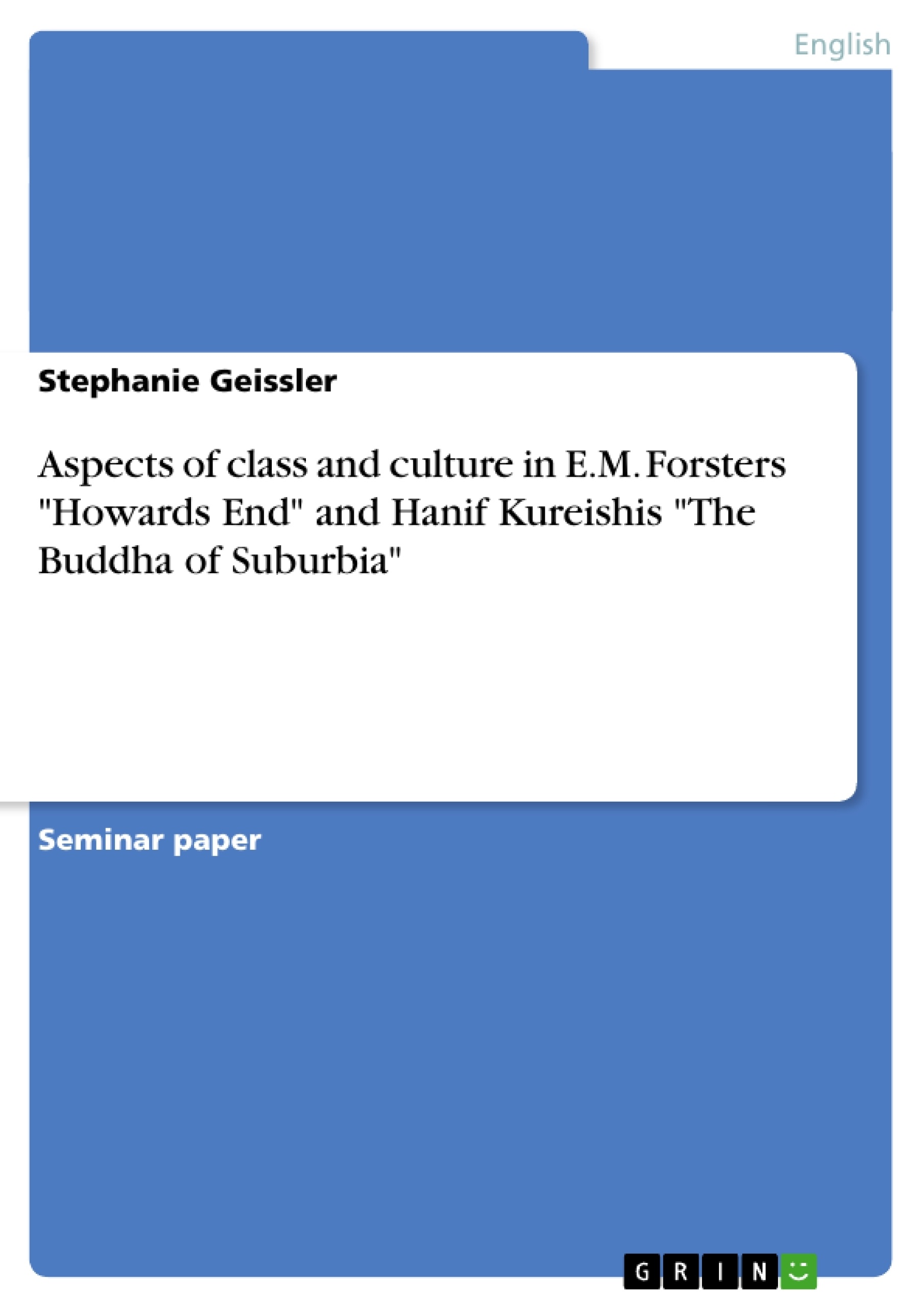“Education in its most genuine form must be reduced to one’s relation to it.”
Although very much related to the fields of sociology, the paper can nevertheless be considered as a literary interpretation.
It is primarily targeted on examining the different aspects of class occurring in Hanif Kureishi’s The Buddha of Suburbia and E.M. Forster’s Howards End, and will attempt to put them into relation to each other. Furthermore, the classes occurring in the two novels shall be analysed in respect of their relation to education and culture.
Especially in the course of recent discussions on poverty and the lower classes in Germany, the subject – which is significantly “harder to talk about […] than other axes of oppression” – surely does not lack a certain relevance.
Inhaltsverzeichnis (Table of Contents)
- Introduction
- Analogies
- Karim and Leonard Bast - autodidacts with inferiority complexes
- Karim vs. Eleanor
- Leonard vs. the Schlegel sisters
- Industrial class vs. Intelligentsia: Howards End's Wilcoxes and Schlegels by analogy
with The Buddha of Suburbia's Ted and Jean and Eleanor
- Ted and Jean's materialism vs. Eleanor's “indifference to class, culture and money”
- Wilcoxes and Schlegels - “Islands of money” vs. the “proponents of friendship”
- The Attractivity of the Lower Classes
- The working class myth in the Buddha of Suburbia in contrast to the reputation of the lower-middle class
- The Schlegels and Leonard Bast - The Charm of the Common Man
- Conclusion
Zielsetzung und Themenschwerpunkte (Objectives and Key Themes)
This paper aims to analyze the different aspects of class in Hanif Kureishi's The Buddha of Suburbia and E.M. Forster's Howards End, exploring their interrelation and relationship to education and culture. By comparing the two novels, written eighty years apart, the paper aims to understand how class distinctions have evolved over time. The analysis will investigate which classes are represented in the novels, how these classes relate to each other, and the role of culture and education in shaping class distinctions.
- Class distinctions and their evolution over time.
- The role of education and culture in shaping class identities.
- The relationship between the lower-middle class and the intelligentsia.
- The contrasting perspectives of the industrial class and the intellectual class.
- The appeal and attraction of the working class and the common man to higher classes.
Zusammenfassung der Kapitel (Chapter Summaries)
The first chapter, "Analogies," highlights striking similarities in naming conventions and narrative elements between The Buddha of Suburbia and Howards End. Despite the absence of a direct relationship between the characters with similar names, the shared symbolism of the umbrella and the parallel deaths of Anwar and Leonard Bast through tragic circumstances illustrate the connection between the two works.
The second chapter focuses on comparing Karim and Leonard, representing the lower-middle class, and their pursuit of cultural aspirations. The chapter examines their shared experiences of being autodidacts with inferiority complexes, but also explores the contrasting contexts that shape their individual journeys.
The third chapter delves into the representatives of the industrial class in both novels: the "Wilcoxes" in Howards End and "Ted and Jean" in The Buddha of Suburbia. It investigates their similarities and differences, focusing on their relationship with the "Schlegels" and "Eleanor," the representatives of the intellectual class.
The fourth chapter investigates the attractiveness and appeal of the working class and the common man to higher classes. It contrasts the working class myth in The Buddha of Suburbia with the lower-middle class portrayal and explores the charm of the common man as perceived by the intellectual class.
Schlüsselwörter (Keywords)
This paper focuses on the intersection of class, culture, and education. It examines the contrasting experiences of the lower-middle class and the intelligentsia, as well as the perspectives of the industrial class. The analysis draws upon the work of Pierre Bourdieu, particularly his theory of "Social Critique of the Judgment of Taste," to provide a framework for understanding the complex dynamics of class distinctions.
- Citation du texte
- Stephanie Geissler (Auteur), 2007, Aspects of class and culture in E.M. Forsters "Howards End" and Hanif Kureishis "The Buddha of Suburbia", Munich, GRIN Verlag, https://www.grin.com/document/76845



